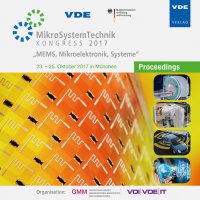Thin film encapsulations for medical applications
Conference: MikroSystemTechnik 2017 - Kongress
10/23/2017 - 10/25/2017 at München, Deutschland
Proceedings: MikroSystemTechnik 2017
Pages: 4Language: englishTyp: PDF
Personal VDE Members are entitled to a 10% discount on this title
Authors:
Selbmann, Franz; Saeidi, Nooshin; Mohandas, Prahlad; Baum, Mario; Wiemer, Maik (Fraunhofer-Institute for Electronic Nano Systems ENAS, Chemnitz, Germany)
Joseph, Yvonne (Institute for Electronic and Sensor Materials, TU Bergakademie Freiberg, Freiberg, Germany)
Otto, Thomas (Fraunhofer-Institute for Electronic Nano Systems ENAS, Chemnitz, Germany/ Center for Microtechnologies (ZfM), TU Chemnitz, Chemnitz, Germany)
Abstract:
To follow the trend of ongoing miniaturization of medical devices and thus enable the advanced diagnostic and therapeutic methods, new processes need to be established. Exemplary for these techniques is 3D conformal encapsulation of medical devices to replace large housings. This work presents the process development for the deposition of the polymer Parylene C. Due to its biocompatibility, low permeability, and high 3D conformity Parylene features excellent properties for the packaging of small biomedical implants. In addition to the development of the deposition process, the deposited Parylene is characterized. Furthermore, the hermeticity against water vapor is investigated using gravimetric determination. Doing so, also investigations on the medical sterilization of Parylene C are performed. Since single Parylene layers still show low permeability, a multilayer approach in combination with diamond like carbon and silicon nitride layers was tested to improve the hermeticity. Finally, the applicability of Parylene C in medical products is proven by the encapsulation of a micro endoscope without observing any influence on the integrated ultrasonic and optical components.


